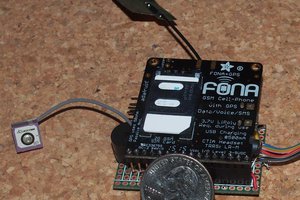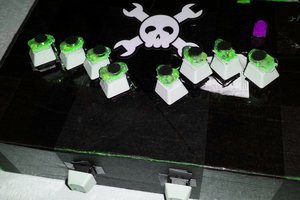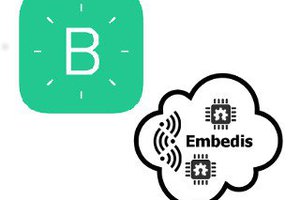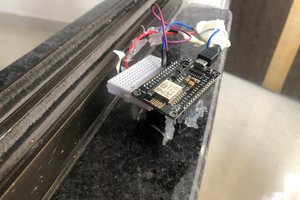I've taken an introductory cryptography course this semester. My inspiration for this project has been the TLS/SSL protocol, which negotiates a unique key for each session and encrypts the communication channel regardless of the data sent through it.
Aspects:
- Negotiating a different key for every exchange: Needs reliable duplex connectivity, hardware PRNG.
- Encryption: 128-bit / 256-bit AES
- Securing networks like 802.15.4 which also involve packet routing and are not exactly point-to-point.
- For the first prototype this may be a device sitting between the microcontroller and the RF transceiver that transparently encrypts and decrypts data so no large-scale changes to existing hardware would be needed.
- I think the nRF24L01s and RFM69s might be good candidates for initial prototypes.
Thanks to the comments on the project, I was directed to the Telehash library that pretty much covers these aspects. So I'm going to try to write a few good example scenarios of using Telehash with Arduino first, the idea being to make it easy to use E2E encryption.
The Deliverables:
- Level 1 - Getting Telehash to work over two Arduino and nRF24L01s.
- Level 2 - A library layer over the RF24 Arduino library for the nRF24L01, that handles the key negotiation and packet encryption transparently.
- Level 2 stretch - A SPI slave that shares the same command set as some of the popular RF modules (I'll start with the nRF24L01) and handles everything transparently. So no changes in user code.
 Kumar, Abhishek
Kumar, Abhishek



 Alpha Charlie
Alpha Charlie
 Paul_Beaudet
Paul_Beaudet
 Pattern Agents
Pattern Agents
 Rohan Barnwal
Rohan Barnwal
I remember seeing that one. From what I understand, it's signed messages, not end-to-end encryption. The idea here is not just to sign messages but also ensure that it is encrypted in transit.
Signed + Encryption can also be done for extra security.
[EDIT: Read the section titled "Why encryption is not a part of this" on the forum post"]